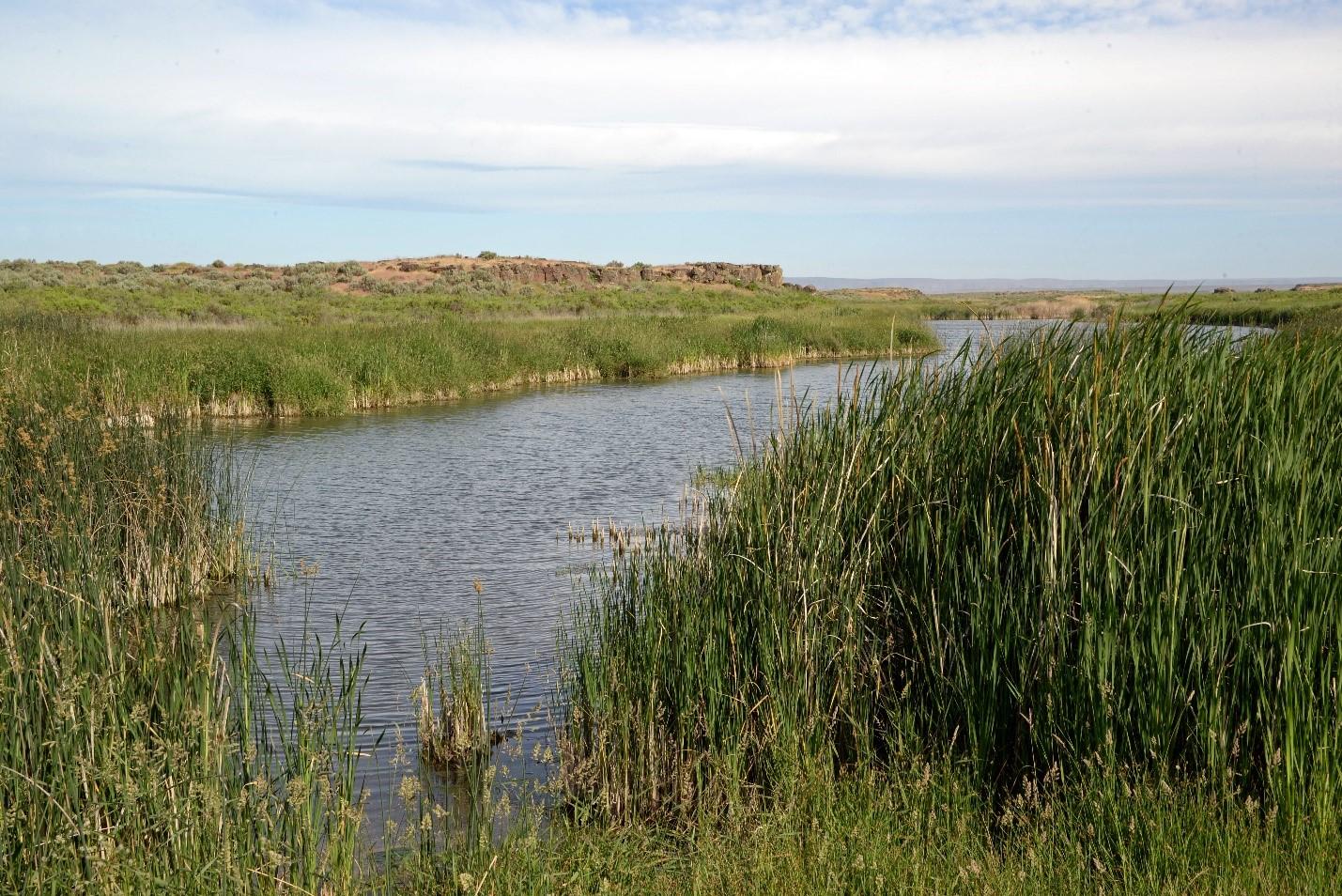
The Gloyd Seeps Unit is channeled scabland within the historic flood channels of Crab Creek. Numerous wetlands, ponds, and seeps are surrounded by the older shrubsteppe uplands and basalt scablands.
Most of the Gloyd Seeps Unit lies along Crab Creek, midway between Moses Lake and Stratford in Grant County. A second parcel to the southwest encompasses a portion of Rocky Ford Creek. County roads provide vehicle access to the unit from Stratford Road north of Moses Lake.
The Gloyd Seeps Unit occurs in the Lower Crab Creek Watershed within the Columbia Plateau.
This unit is part of the Columbia Basin Wildlife Area.
Game Management Unit: 272
Getting there
Maps and directions to WDFW-managed access points for this unit. Opens Google Maps in a new tab.
Recreation and public access
A Discover Pass is required on WDFW lands -- including water access areas, wildlife areas, and campgrounds -- unless you already have a Vehicle Access Pass issued with the purchase of an eligible hunting or fishing license. Recreate responsibly on public lands: please know the Public Conduct Rules.
Public facility information:
- Several parking areas
- No restroom
Hunting
WDFW releases pheasants on this unit to provide hunting opportunity.
Hunting advisories
- On all WDFW pheasant release sites it is unlawful to possess shot (either in shotshells or as loose shot for muzzleloading), other than nontoxic shot, when hunting for upland game birds (pheasant, quail, chukar, and gray partridge), mourning dove, and band-tailed pigeon (WAC 220-414-040).
Fishing
Rocky Ford Creek and Homestead Creek are quality trout fishing waters.
Wildlife viewing
This unit includes shrubsteppe uplands, basalt scablands, wetlands, ponds, and seeps, offering opportunities to view a variety of wildlife.
Search for potential birding opportunities on or near a wildlife area unit by using eBird Northwest, a citizen science database portal that provides freely-shared bird lists at 'hotspots' and interactive maps plus other birding information updated daily.
Wildlife viewing advisories
- Greater sage grouse (state-listed threatened species) are sensitive to human disturbance. Do not flush or otherwise disturb these birds.
Conservation
This unit is a mix of disturbed and native habitats and agriculture. Fires have created grasslands along most of the area on the west side of Crab Creek.
Conservation goals
- Maintain enhanced wildlife habitats and preserve native plant communities and important habitats
- Restore and preserve shallow water habitat and pools
- Manage migrant waterfowl, upland game birds, and priority species
Land stewardship
Most of the Gloyd Seeps Unit was acquired through a series of purchases by WDFW. Approximately one third the acres managed as the Gloyd Seeps Unit are owned by the U.S. Bureau of Reclamation but managed by WDFW through a Memorandum of Understanding. Most of the remaining acres are deeded land that was purchased by WDFW in the 1970s and 1980s.
Acquisition history
The parcels making up this area were purchased between 1955 and 2025.
| Funder | Fund |
|---|---|
| Power, dike & irrigation districts | Mitigation Funds |
| US Fish and Wildlife Service | North American Wetlands Conservation Program |
| US Fish and Wildlife Service | Pittman-Robertson Wildlife Restoration Program |
| US National Park Service | Land and Water Conservation Fund |
| WA Dept of Fish and Wildlife | Fish & Wildlife Conservation Account |
| WA Dept of Fish and Wildlife | WDFW Game Fund (now Wildlife Fund) |
| WA Recreation and Conservation Office | State Bond Account |
Management planning
2022 Columbia Basin Wildlife Area Management Plan
Every eight to 10 years, the Washington Department of Fish and Wildlife (WDFW) revises management plans for each of its 33 wildlife areas to document current conditions, address new agency initiatives, and identify new management priorities and actions. In between those major revisions, WDFW updates plans every two years to outline short-term objectives and accomplishments. In 2014, WDFW began the process of updating existing plans, many of which were written in 2006. The new plans are being developed with significant public participation and input.
Planning Advisory Committee
Columbia Basin Wildlife Area Advisory Committee